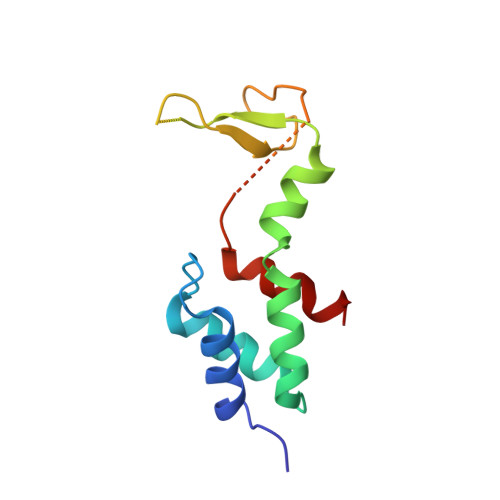Structural role of the Vps4-Vta1 interface in ESCRT-III recycling
Yang, D., Hurley, J.H.(2010) Structure 18: 976-984
- PubMed: 20696398
- DOI: https://doi.org/10.1016/j.str.2010.04.014
- Primary Citation of Related Structures:
3MHV - PubMed Abstract:
The ESCRT complexes are required for multivesicular body biogenesis, macroautophagy, cytokinesis, and the budding of HIV-1. The final step in the ESCRT cycle is the disassembly of the ESCRT-III lattice by the AAA+ ATPase Vps4. Vps4 assembles on its membrane-bound ESCRT-III substrate with its cofactor, Vta1. The crystal structure of the dimeric VSL domain of yeast Vta1 with the small ATPase and the betadomains of Vps4 was determined. Residues involved in structural interactions are conserved and are required for binding in vitro and for Cps1 sorting in vivo. Modeling of the Vta1 complex in complex with the lower hexameric ring of Vps4 indicates that the two-fold axis of the Vta1 VSL domain is parallel to within approximately 20 degrees of the six-fold axis of the hexamer. This suggests that Vta1 might not crosslink the two hexameric rings of Vps4, but rather stabilizes an array of Vps4-Vta1 complexes for ESCRT-III disassembly.
Organizational Affiliation:
Laboratory of Molecular Biology, National Institute of Diabetes and Digestive and Kidney Diseases, National Institutes of Health, U.S. Department of Health and Human Services, Bethesda, MD 20892, USA.















